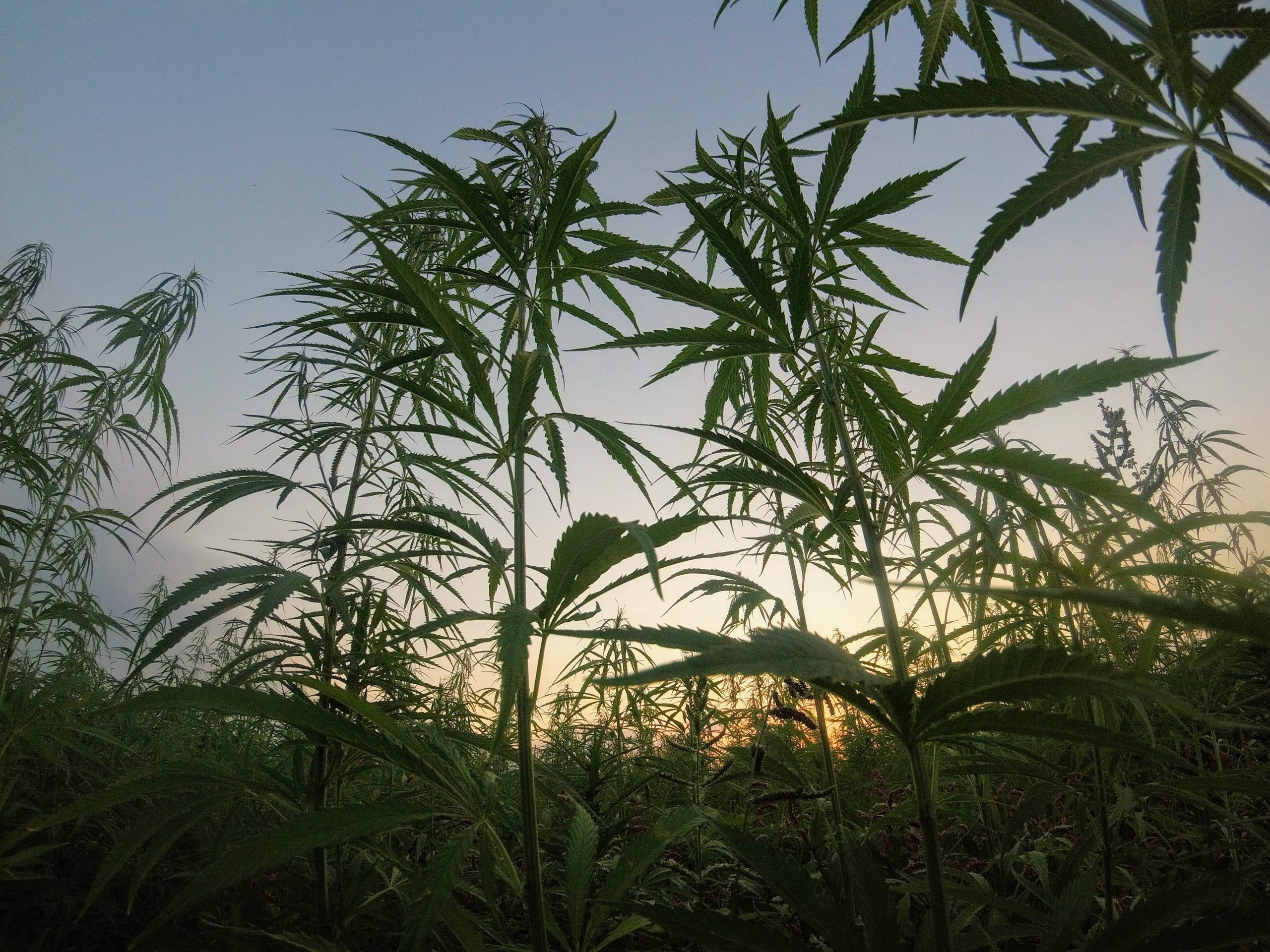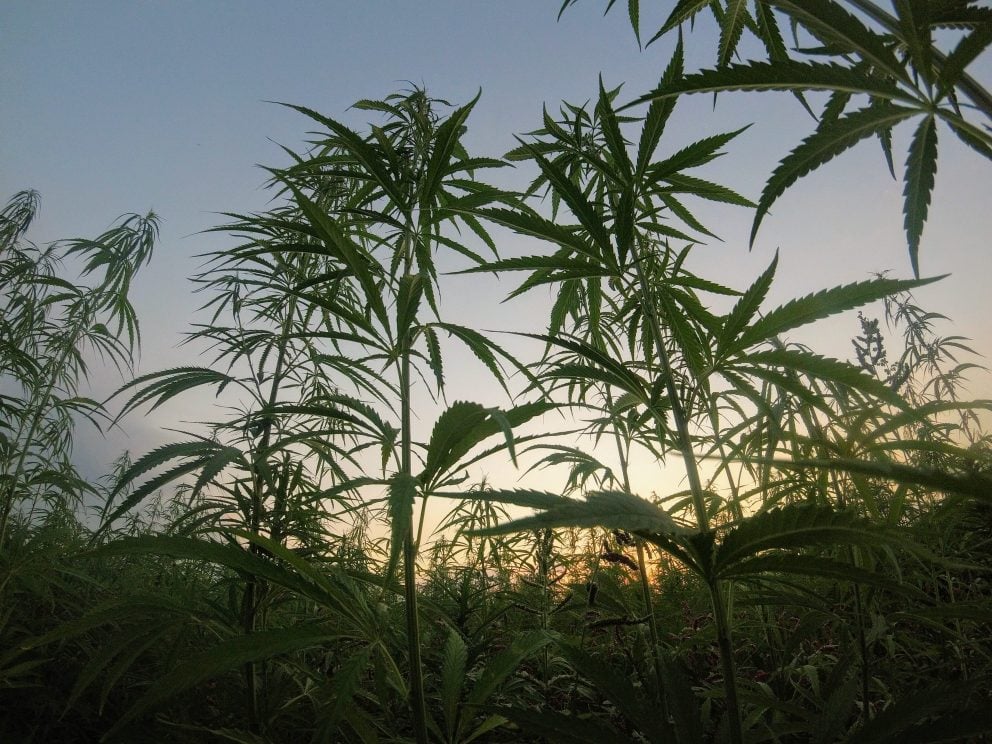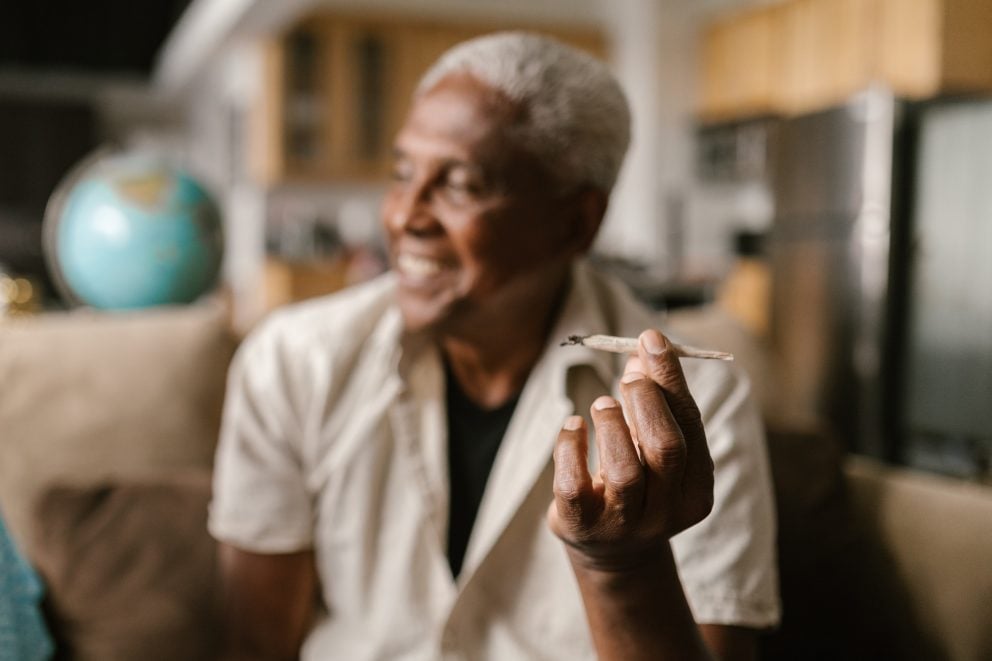
What is Hemp, and What is the Difference Between Hemp and Marijuana?

Photo by Matteo Paganelli
Hemp and marijuana are often spoken of in the same breath, so does this make them the same? They’re similar, but the difference between hemp and marijuana is defined by the amount of delta-9 tetrahydrocannabinol (THC) in each one. They might be the same plant species, but they’re certainly not the same thing.
This is why the 2018 Farm Bill saw hemp production legalized, even though weed remained illegal at the federal level. In this guide, we will discuss hemp, cannabis, and their differences.
What is Hemp?
Hemp is believed to be one of the oldest domesticated crops on the planet. Before people learned about the benefits of smoking pot, hemp was used for many functions, including making clothes and producing early forms of paper.
In fact, an archaeological dig in Japan found evidence that hemp was used as distantly as 8,000 BC, making it one of the oldest human relics related to human industry.
It demonstrates that hemp has been a vital part of humanity for much of its existence. But where does hemp come from?
Today, hemp, known as industrial hemp, containing less than 0.3% THC, is derived from Cannabis sativa L species. So, hemp does come from the same plant species as cannabis, but they’re genetically distinct, meaning their cultivation, chemical structure, and uses differ.
Apply for a Medical Marijuana Card Online Today
Join over 100,000 patients who have chosen Green Health Docs as their medical cannabis doctors. We have a 99% approval rate and offer a 100% money back guarantee!
Is Hemp the Same as CBD?
Many people compare hemp vs. CBD as two separate products or plants, but one is derived from the other. Cannabidiol, CBD, is a cannabinoid found in hemp and non-hemp plants. Typically, it’s harvested from the hemp plant’s flowers, leaves, and stems. But hemp isn’t the same as CBD.
CBD is just one of the many compounds found in hemp. These compounds are known as phytocannabinoids, and other cannabinoids also contribute to producing the benefits of hemp, including:
- CBDA
- CBDV
- CBG
- CBC
- CBN
- CBL
And this is merely a shortlist. Research has already discovered at least 100 of these phytocannabinoids in hemp, and many scientists suspect there are still more to be discovered.
If you decide to purchase hemp products, you should be aware of other phytocannabinoids rather than just CBD.
Can You Smoke Hemp?
Since the 2018 Farm Bill, anyone in any state can smoke as much hemp as they want. Even though far fewer people are predicted to smoke hemp than the 18% of Americans who smoke cannabis buds, it’s growing in popularity.
Here are some of the potential benefits of smoking hemp to get your CBD fix:
- Increased Bioavailability – More bioavailability allows your body to absorb and use more. When smoking hemp, about 50% of the CBD should enter your bloodstream, compared to 5% when eating a CBD edible.
- Work Faster – One of the noticeable benefits of smoking hemp is that all the beneficial cannabinoids within will enter your bloodstream faster. It can take as little as three minutes to reach peak concentrations.
- Affordability – Smoking hemp is a far more affordable option than purchasing oils, edibles, and topicals because of the lack of processing involved. Smoking hemp is the way to go if you’re watching your wallet.
Naturally, you must be aware that smoking anything will never be healthy for the lungs. However, smoking hemp or marijuana is always better for your body than tobacco and other drugs due to the lack of toxins and impurities.
Some people even use hemp as a substitute for cigarettes and other tobacco products.

Photo by RDNE Stock Project
Does Hemp Get You High?
It’s impossible to get high from hemp because it only contains tiny amounts of THC, the main psychoactive component in marijuana. However, other cannabinoids in hemp will have an effect.
What does hemp do?
Hemp could make you feel more relaxed and less stressed. Some other effects include better sleep, more focus, and less stress. In other words, it’s a great way to enjoy the benefits of the cannabis species while remaining fully functional.
What Does a Hemp Plant Look Like?
The hemp plant is renowned for its distinctive leaves, usually bright green, consisting of seven fingers with visible serrations. In other words, it looks exactly like a cannabis plant. However, specific identifiers can help you distinguish between a hemp and a cannabis farm.
Hemp Seed
Hemp seeds are around two to three millimeters across and come with a creamy green color in black hulls. These seeds contain no CBD but can be used for other purposes, including food.
Some of the minerals inside each seed include:
- Protein
- Magnesium
- Calcium
Hemp Stalk
The difference between hemp and marijuana may not become apparent until the latter growth stages by sight alone. Still, you can already begin spotting some differences as the stem grows.
The stalks are usually tall and slender, with branches emerging from their joints. These plants prefer to grow vertically and rarely spread horizontally like some marijuana species.

Photo by Crystalweed
Hemp Leaves
The leaves are often the most distinctive parts of the plant. Each leaf will contain long, thin fingers with serrations. Known as “leaflets,” each leaf may contain five to seven fingers. Generally, the lower leaves will have fewer fingers, but one of the quirks of this plant is that there will always be an odd number of fingers.
Note that different species may produce various leaf colors, including green and purple. So, what’s the difference between hemp and marijuana leaves?
Typically, pure cannabis leaflets will be fatter and closer together, which is why many marijuana plants have a bushy appearance.
Hemp Flower
Most of the hemp plant’s cannabinoids are found in the flowers. These compounds combine with terpenes, flavonoids, and other beneficial compounds to produce the distinct pros of the plant.
Working out how to identify hemp buds may take a lot of work, but there are certain markers you can look for. You can often spot a hemp flower with its fuzzy appearance and sticky resin. You’ll also notice a distinct hemp aroma.
Note that these characteristics are only found in the female plant. Industrial hemp farms will consist of 99% female plants.
Can I Grow Hemp in My Backyard?
Yes, you can grow hemp legally anywhere in the U.S. as long as you adhere to the rules set down in 2018. The law states that any hemp harvest must consist entirely of plants with less than 0.3% THC, or it’s considered to be marijuana. Obviously, this isn’t an issue in states where recreational marijuana growing has been legalized.
Like all cannabis plants, you can grow hemp indoors or outdoors, depending on your local climate. According to the latest stats, the top hemp-producing states in the country include Oregon, Kentucky, Utah, and California.
So, there’s a significant mix between states with legalized marijuana and those that maintain federal prohibitions. But it does show how public perceptions are shifting regarding the cannabis plant species.

Photo by Crystalweed
What is the Difference Between Hemp vs. Marijuana?
Due to the fact that these plants are the same species, people often assume that these plants are the same thing, but that is far from the truth. Let’s compare cannabis vs. hemp to allow you to understand how they differ.
THC Content
The first and most prominent difference is the amount of THC in the plant. A high-potency cannabis strain may contain anywhere from 15% to 40% THC, whereas the legal classification of hemp states that there must be less than 0.3% THC in each plant.
CBD Content
Hemp plants are known for containing large concentrations of CBD and other non-intoxicating cannabinoids. Like THC, CBD has long been valued for its therapeutic effects, which is why it’s found as the active ingredient in countless health, wellness, and beauty products today.
In other words, the difference between hemp and marijuana is that the former uses CBD as its dominant cannabinoid, whereas the latter utilizes THC as its dominant cannabinoid.
Uses
Hemp and marijuana have both been used for thousands of years worldwide. However, they are generally bred for different uses.
For example, hemp is mainly used for industrial purposes, even though it can be smoked to take advantage of its higher concentrations of CBD. Over the course of human history, hemp has been used for construction, textiles, paper, clothing, and food.
On the other hand, marijuana is usually produced purely for its psychoactive and therapeutic effects.
Cultivation
When comparing hemp vs. weed, it’s vital to compare how they’re cultivated. Typically, hemp is grown outdoors because of the plant’s height. It’s also much hardier than most marijuana plants, meaning that it can thrive in all manner of climates.
In contrast, weed plants are often grown indoors because of the need for fingertip control over the growing conditions.
Legality
Finally, hemp is legal to cultivate in numerous countries worldwide. The U.S. joined the party in 2018, making hemp legal to grow, consume, and use in every corner of the country.
Marijuana legalization is a more significant hot-button issue because legality varies hugely both overseas and between states in the U.S. For example, many states have legalized marijuana for medicinal purposes but maintain strict prohibitions on weed for recreational use.

Photo by Kimzy Nanney
Hemp vs. Marijuana: FAQs
Where did hemp originate?
People can only say for sure where hemp originated, but the oldest recorded evidence of hemp use was found in Japan. It was also dated at 8,000 BC, but this is merely the oldest. Hemp has been found everywhere, from China to India and Siberia.
Is it legal to grow hemp?
It’s perfectly legal to grow hemp anywhere in the U.S. as long as it falls under the strict definition of hemp and not marijuana. Moreover, you don’t require a license to grow a limited number of plants in your backyard. However, beware that commercial growers will have different requirements, which may vary based on the state.
What are some common uses of the hemp plant?
Hemp has been prized throughout history for its versatility. Even though many people today choose to smoke it, industrial hemp can be found in clothing, paper, textiles, supplements, and food.
Do hemp plants smell?
Hemp plants have a distinctive smell because they’re of the same species as cannabis. Like all cannabis strains, each hemp species will have its own distinct smell. But even though the odors may seem similar, the discerning nose can spot the differences. With that in mind, why do hemp plants smell so good?
The odor is caused by chemical compounds known as terpenes, which also have their own health benefits. In nature, terpenes have their uses because hemp plants use them to defend themselves against animals and pests. Thus far, more than 100 terpenes have been discovered, with scientists believing that countless others remain undiscovered.
What does hemp taste like?
Hemp has a distinct taste, just like your favorite marijuana buds. But it can taste differently depending on whether you’re consuming hemp seed oil, smoking it, or eating a delicious treat containing hemp.
However, on the whole, the taste can be described as an earthy, nutty flavor, with some people reporting that they detect a slight sweetness in some types of hemp. But, as always, everyone’s experience will differ.
 This article has been reviewed by Dr. Anand Dugar, an anesthesiologist, pain medicine physician and the founder of Green Health Docs. Graduating from medical school in 2004 and residency in 2008, Dr. Dugar has been a licensed physician for almost 20 years and has been leading the push for medical cannabis nationwide.
This article has been reviewed by Dr. Anand Dugar, an anesthesiologist, pain medicine physician and the founder of Green Health Docs. Graduating from medical school in 2004 and residency in 2008, Dr. Dugar has been a licensed physician for almost 20 years and has been leading the push for medical cannabis nationwide.
